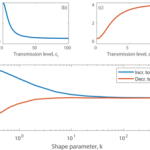A recent study suggests that disrupting the connection between the body’s circadian clock and brain functions may play a significant role in combating neurodegeneration associated with Alzheimer’s disease. Led by Erik Musiek, a neurology professor at Washington University in St. Louis, along with first author Jiyeon Lee and a team of researchers, the study focused on mouse models to explore the effects of a specific circadian protein.
The circadian clock protein in question, known as REV-ERBα, is recognized for its role in regulating daily metabolic and inflammatory rhythms. While this protein has not been extensively studied in the brain, its influence in other tissues indicates it helps control levels of nicotinamide adenine dinucleotide (NAD+), a critical molecule required for various cellular functions, including DNA repair and metabolic processes. Researchers have identified a direct correlation between NAD+ levels and brain health; specifically, lower NAD+ levels are associated with accelerated brain aging and neurodegeneration.
Many commercial supplements claim to boost NAD+ levels as a means to mitigate aging effects. Musiek’s research took a significant step further by examining the impacts of REV-ERBα on NAD+ levels in mouse models.
The study involved two distinct groups of mice: one where REV-ERBα was genetically deleted across all tissues and another where it was specifically deleted in astrocytes—glial cells that constitute a substantial part of the central nervous system. Results showed an increase in NAD+ levels in both groups, underscoring that the absence of REV-ERBα in astrocytes directly affects NAD+ levels in the brain. This discovery opens a potential pathway for future research aimed at treating neurodegenerative diseases.
Moreover, the team further tested the effects of REV-ERBα inhibition through both genetic deletion and a promising new drug that has demonstrated potential benefits in amyloid-β pathology and Parkinson’s disease studies. The findings revealed that inhibiting REV-ERBα led to elevated NAD+ levels and offered protection against tau pathology, a toxic aggregation of proteins that is linked to neurodegenerative diseases such as Alzheimer’s.
These insights suggest that the experimental drug may pave the way for innovative therapeutic approaches to preventing and managing Alzheimer’s disease.
The results of this pivotal research have been published in the esteemed journal, Nature Aging. The study not only highlights the intricate relationship between circadian rhythms and brain health but also sets the stage for exploring novel treatments that could significantly alter the landscape of Alzheimer’s disease management in the future.






